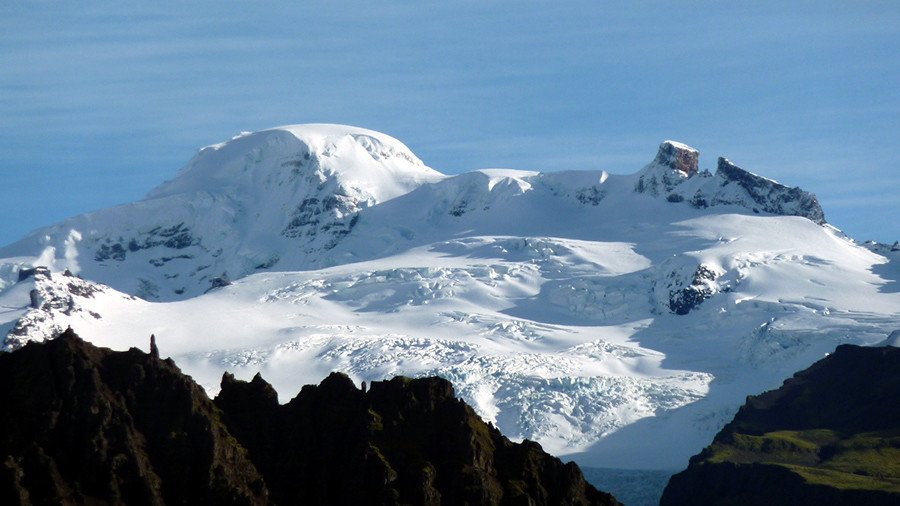Iceland drafts emergency evacuation plans as volcano rumbles after centuries of inactivity

A long-dormant volcano has begun to show signs of activity in Iceland, with authorities fine-tuning evacuation plans in the event it becomes one of the largest eruptions in the country’s history.
Öræfajökull, a volcano that last erupted in 1728, is being closely monitored by the Icelandic Meteorological Office (IMO) and the Civil Protection Agency, with satellite images showing a kilometer-wide depression in the surface of the ice in the volcano’s mouth. This phenomenon is known as an “ice cauldron.”
READ MORE: Volcano erupts on Indonesian resort island amid mass evacuations (VIDEOS)
The IMO reported that geothermal water released from the mouth of the volcano, or ‘caldera,’ has now mixed with melted water from the glacier, resulting in a smell of sulfur being detected along the nearby Kvia river. There is not yet any sign of a flood risk.
New satellite images of Öræfajökull volcano shows that a new ice-cauldron has formed within the caldera. It seems that geothermal water has been slowly released from underneath the cauldron to the glacial river of the Kvíárjökull outlet-glacier. pic.twitter.com/LKnJlNxAEf
— Veðurstofa Íslands (@Vedurstofan) November 17, 2017
“Although there has been significant geothermal activity in the Öræfajökull caldera, there are no signs of an imminent volcanic eruption,” the IMO said in a statement on its website. “There is considerable uncertainty about how the situation will evolve. The Icelandic Meteorological Office continues to monitor the region around-the-clock via seismic observations.”
The danger level for Öræfajökull remains at ‘yellow,’ with fire brigades on standby to assist with possible evacuations. Police posted a breakdown of emergency evacuation plans on its Facebook page Wednesday, including instructions for local residents on what to do in the event of an eruption.
Alert code yellow means the volcano is active, but nothing points to an imminent discharge. The volcano sits in a remote area on the southeast coast of Iceland. The last eruption in 1728 was the largest ever recorded.
READ MORE: Volcano spews plume of ash into the sky near Mexico City (PHOTOS, VIDEO)
In 2010, an eruption of Eyjafjallajökull, another Icelandic volcano, caused widespread chaos as the resulting ash cloud grounded flights all over Europe for a week due to visibility concerns and anxieties over the effect of the ash on aircraft engines. The shutdown cost airlines as much as $2.5 billion collectively, according to Science.












